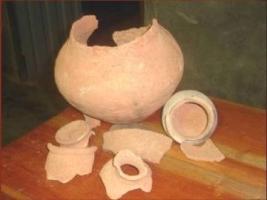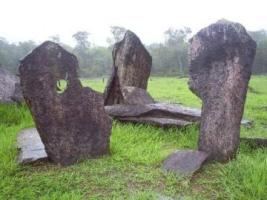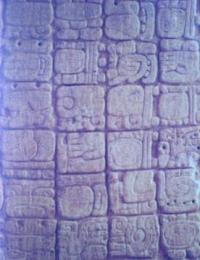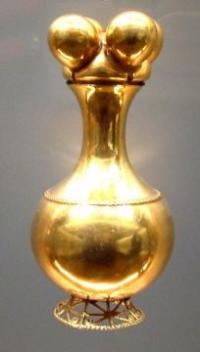Copy Link
Add to Bookmark
Report
Cider Digest #1050

From: cider-request@talisman.com
Errors-To: cider-errors@talisman.com
Reply-To: cider@talisman.com
To: cider-list@talisman.com
Subject: Cider Digest #1050, 19 June 2003
Cider Digest #1050 19 June 2003
Forum for Discussion of Cider Issues
Dick Dunn, Digest Janitor
Contents:
Re:Carbonation levels (Tim Bray)
Introduction and a question (Tim Bray)
Cider flavour (Andrew Lea)
Re: State Reform to Distribution Laws ("Gary Awdey")
RE: introduction and carbonation ("David Llewellyn")
Re: Carbonation Levels (Fred Johnson)
Another Wine Competition with Cider ("McGonegal, Charles")
Send ONLY articles for the digest to cider@talisman.com.
Use cider-request@talisman.com for subscribe/unsubscribe/admin requests.
When subscribing, please include your name and a good address in the
message body unless you're sure your mailer generates them.
Archives of the Digest are available at www.talisman.com/cider
----------------------------------------------------------------------
Subject: Re:Carbonation levels
From: Tim Bray <tbray@mcn.org>
Date: Wed, 18 Jun 2003 11:26:00 -0700
>Just tried some of my sparkling cider last night and was disappointed w/
>the level of carbonation. Used a 12oz can of apple concentrate for a 5
>gallon batch per a recommendation off the net.
I've done that and got more than I actually wanted. Maybe something funny
with your concentrate? Preservatives? Or, maybe, you like more
carbonation than I do. I aim for "petillant," just enough to make a little
foam when poured and give it a little tickle on the tongue. The batch I
made last fall with Wyeast cider yeast was like that with no priming (I
mistakenly primed it anyway and got too much carbonation).
>What are the list members carbonating their sparkling ciders with?
I have used concentrate, corn sugar, fresh juice, and nothing. Also I have
done a secondary ferment in-bottle, followed by ageing and degorgement, to
produce a naturally sparkling champagne-style cider. A lot of trouble, and
messy, but the results were good.
Cheers,
Tim
Albion, CA
------------------------------
Subject: Introduction and a question
From: Tim Bray <tbray@mcn.org>
Date: Wed, 18 Jun 2003 11:49:04 -0700
> I boiled the concentrate with about 2
>gallons of water for 15 minutes and added it to the carbouy with
>cold water.
Ack! Boiling is for beer, not cider. Never boil fruit juices before
fermentation.
>When cool I pitched a champagne yeast. It fermented
>to completion in just over a week (extremely dry).
Champagne yeast will do that. Actually, all commercial yeasts
(Saccharomyces sp.) will ferment cider to dryness. Unlike beer wort, all
the sugars in apple juice are fermentable.
About the odd aftertaste, I have no idea, but I'll bet someone else on this
digest does...
> I will
>gave access to a friend's apples and press to make a real cider
>later this summer and would like to produce a quality product.
Buy only fully-ripe apples, direct from the grower if possible.
Let the apples sit for a while, at least 2 weeks to a month, before pressing.
Don't heat the juice before fermenting.
Choose yeast carefully.
Ferment cold if at all possible.
Plan to age the finished cider a few months before drinking.
I think those are the basics. Judicious use of sulfite and careful racking
at the appropriate times are the next level of effort. Read Andrew Lea's
pages, over and over - there's a lot of great information there!
Cheers,
Tim
Albion, CA
------------------------------
Subject: Cider flavour
From: Andrew Lea <andrew_lea@compuserve.com>
Date: Wed, 18 Jun 2003 20:09:14 +0100
Cameron wrote:
>I boiled the concentrate with about 2
> gallons of water for 15 minutes and added it to the carbouy with
> cold water. When cool I pitched a champagne yeast. It fermented
> to completion in just over a week (extremely dry).
> The flavor was quite good and very dry. However, there was a
> strange aftertaste. It was an unusual sweetness that had a
> saccharine like tint.
>
> Does anyone have any idea about what might have caused this flavor?
>
Welcome to the club! I think the flavour problem is almost certainly
due to the boiling of the concentrate. That will give sweet jammy
flavours due to the Maillard reaction (sugar caramelisation).
Apple juice should never be boiled before making cider. This is a wine
you're making, not a beer! Worts are boiled for reasons that do not
apply in wine or cidermaking.
To 'sterilise' the apple juice in cider making you add sulphur dioxide
(1 or 2 Campden tablets per gallon). Then wait at least 24 hours before
adding the yeast. (Also note that champagne yeasts tend to give dryer
flavours than regular wine yeasts)
See the 'Science of Cidermaking' on my website for more details of
beginner cidermaking!
Andrew Lea, nr Oxford, UK
- ----------------------------------
Visit the Wittenham Hill Cider Page at
http://www.cider.org.uk
------------------------------
Subject: Re: State Reform to Distribution Laws
From: "Gary Awdey" <gawdey@att.net>
Date: Wed, 18 Jun 2003 17:11:46 -0400
In Cider Digest #1048 Jack Eggleston mentioned the group Free the Grapes and
provided a link to a map showing distribution laws for wine (and by
extension, cider).
It turns out there's a lot more information on their website than I first
realized when I used Jack's link (which takes you to a map that categorizes
the level of state restriction on direct shipment). Just to make sure no
one who's interested in following this subject repeats my initial mistake
and fails to click "HOME" at the top of the page Jack linked here's the link
to Free the Grape's home page: http://www.freethegrapes.org/
Gary Awdey
Eden, NY
------------------------------
Subject: RE: introduction and carbonation
From: "David Llewellyn" <fruitofthevine@eircom.net>
Date: Thu, 19 Jun 2003 11:28:31 +0100
Hello everybody, I am a new member, growing apples and making real cider in
Ireland.
In reply to Dan Aldrich, Dan are you bottling your cider and trying to get a
secondary fermentation in the bottle? We make it a point that we add
absolutely no sugar or water (or concentrate!!) in our cider, and to get the
carbonation we add a proportion of fresh apple juice to the finished bulk
dry cider before bottling. We find that there is enough yeast in the bulk
cider to bring about the bottle fermentation, so we do not add yeast at this
stage. We find this gives very good results. The bottle cider then has a
lively sparkle (can be varied with the proportion of fresh juice dose) and
is dry. Naturally a small deposit settles in the bottom of the bottle, but
that doesnt bother us.
Has anybody out there ever used this technique, or heard of it being used??
We have not heard of it used elsewhere, and would be interested in other
cider-makers' experience of this form of inducing a sparkle in bottle.
David Llewellyn.
------------------------------
Subject: Re: Carbonation Levels
From: Fred Johnson <FLJohnson@portbridge.com>
Date: Thu, 19 Jun 2003 07:06:04 -0400
Dan asks us what we are carbonating our ciders with.
I have mostly used dextrose at a whopping 4 volumes (56 g per gallon)
for that champagne effect.
Fred L Johnson
Apex, North Carolina, USA
------------------------------
Subject: Another Wine Competition with Cider
From: "McGonegal, Charles" <Charles.McGonegal@uop.com>
Date: Thu, 19 Jun 2003 07:21:34 -0500
When Bill Rhyne mentioned VWM's Eastern International, he reminded me of
Indiana's Indy International.
I've been entering in the amateur class of the Indy International Wine Comp.
for about 5-6 years now. It's held at the State fair, but sponsored and
organized by folks at Purdue (I believe). Wine competitions are notoriously
un-scientific affairs, with little or no value if you're trying to
objectively compare wines. (Somehow I suspect that beer competitions are
pretty much the same.) BUT, that said, the relative rankings of the ciders
I've submitted have consistently matched my own personal opinion of their
relative merit. I suppose that's a start. The only time I've been
disappointed was when I entered a Keepsake/St. Edmund's Pippin blend. At
our orchard, Keepsake develops a pretty strong anise scent and flavor,
especially on the sun side. A hint of that made it into the final cider. I
think it confused the judges - one asked if I was using rotten fruit. Since
then I've taken pains to note that I'm using heirloom varieties in an
attempt to manage their expectations, I guess.
I note three categories that ciders could fall into: Sparkling Non-grape,
Cider, and Apple/Pear Still Wine.
Last year's contest results list several medal winners in the sparkling
non-grape (including a perry) and cider classes, both commercial and
amateur classes - and none of them are 'industrial' ciders.
Charles
AEppelTreow Winery
------------------------------
End of Cider Digest #1050
*************************
























